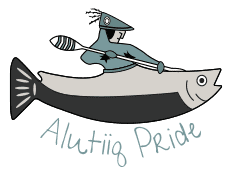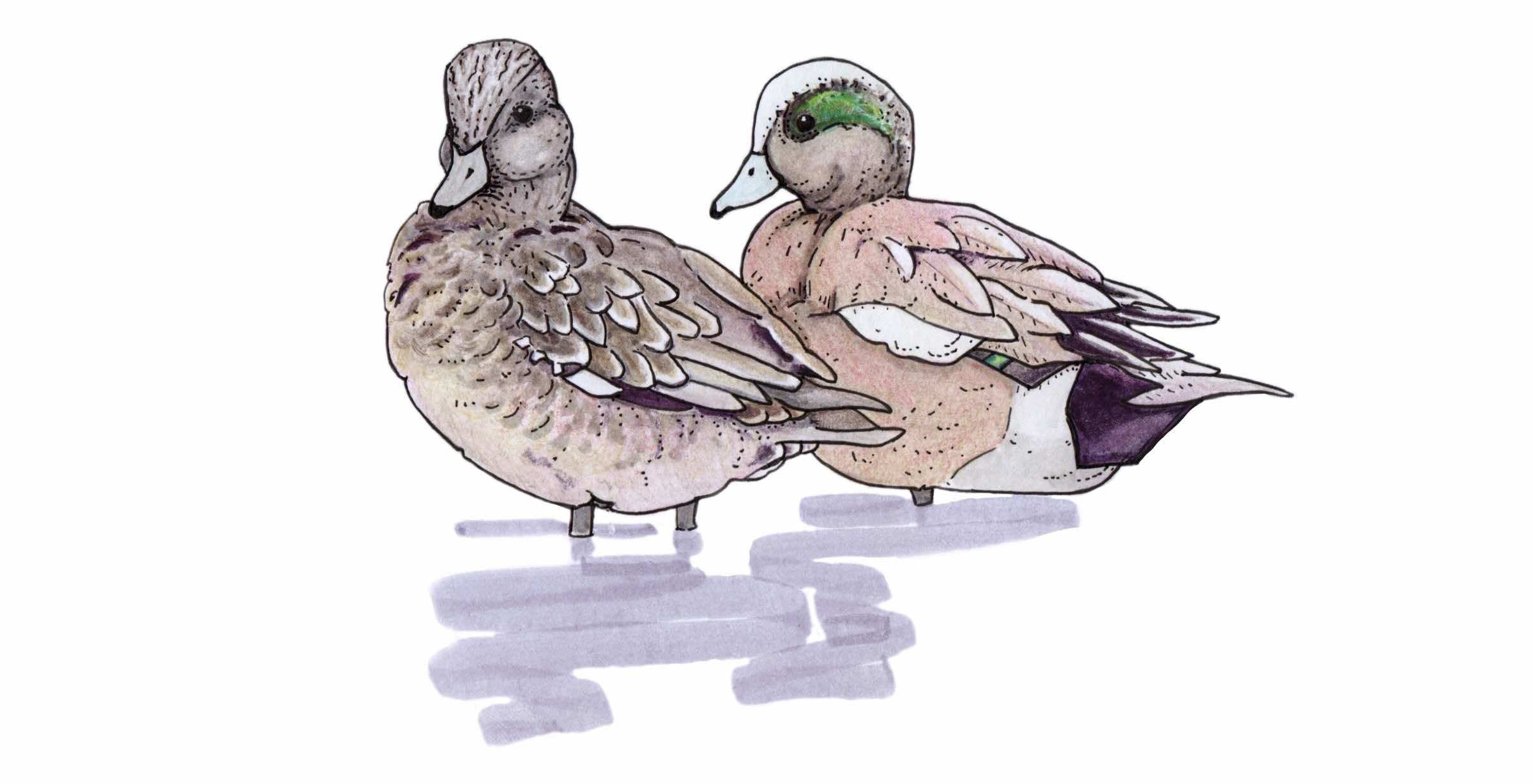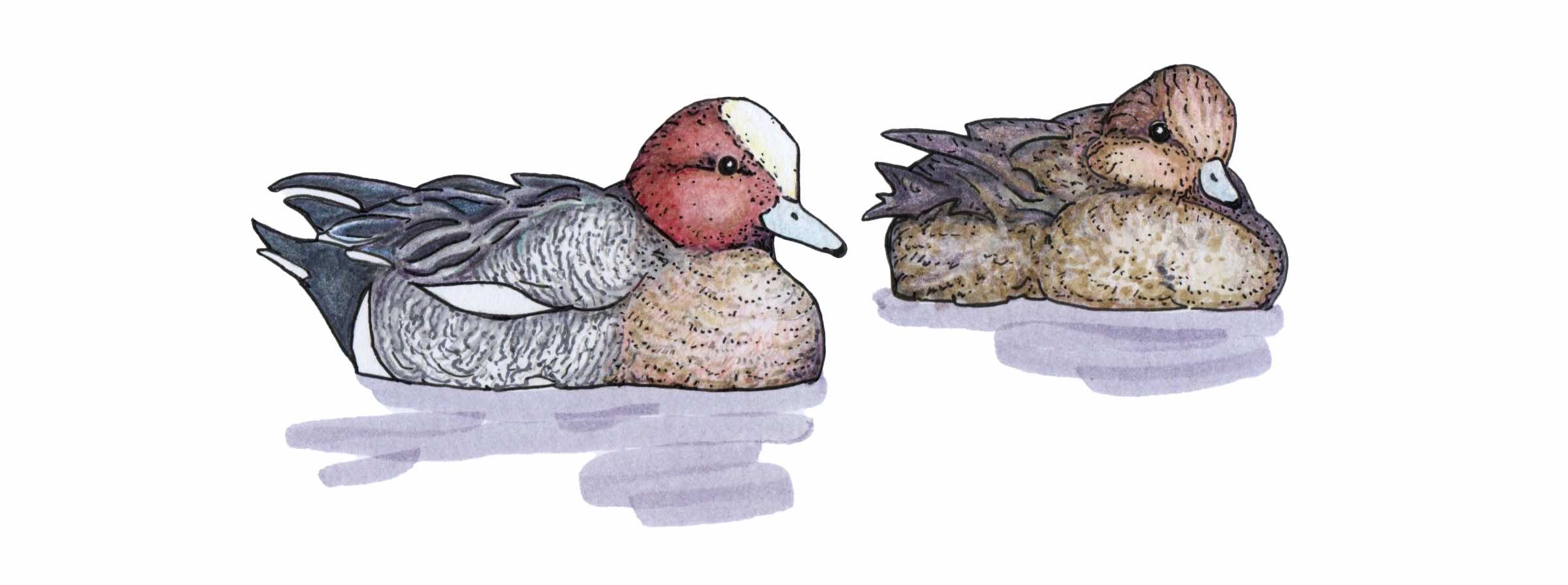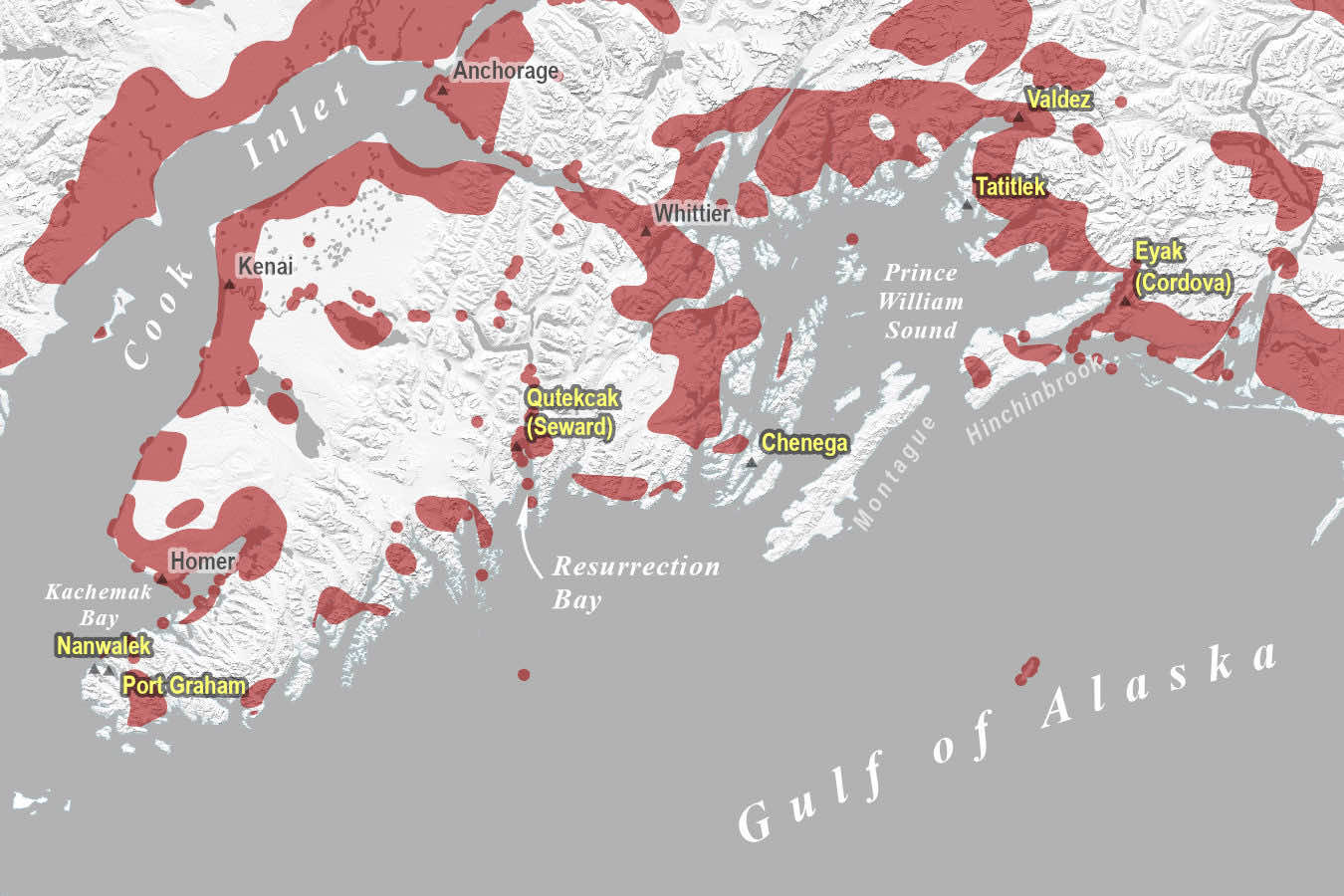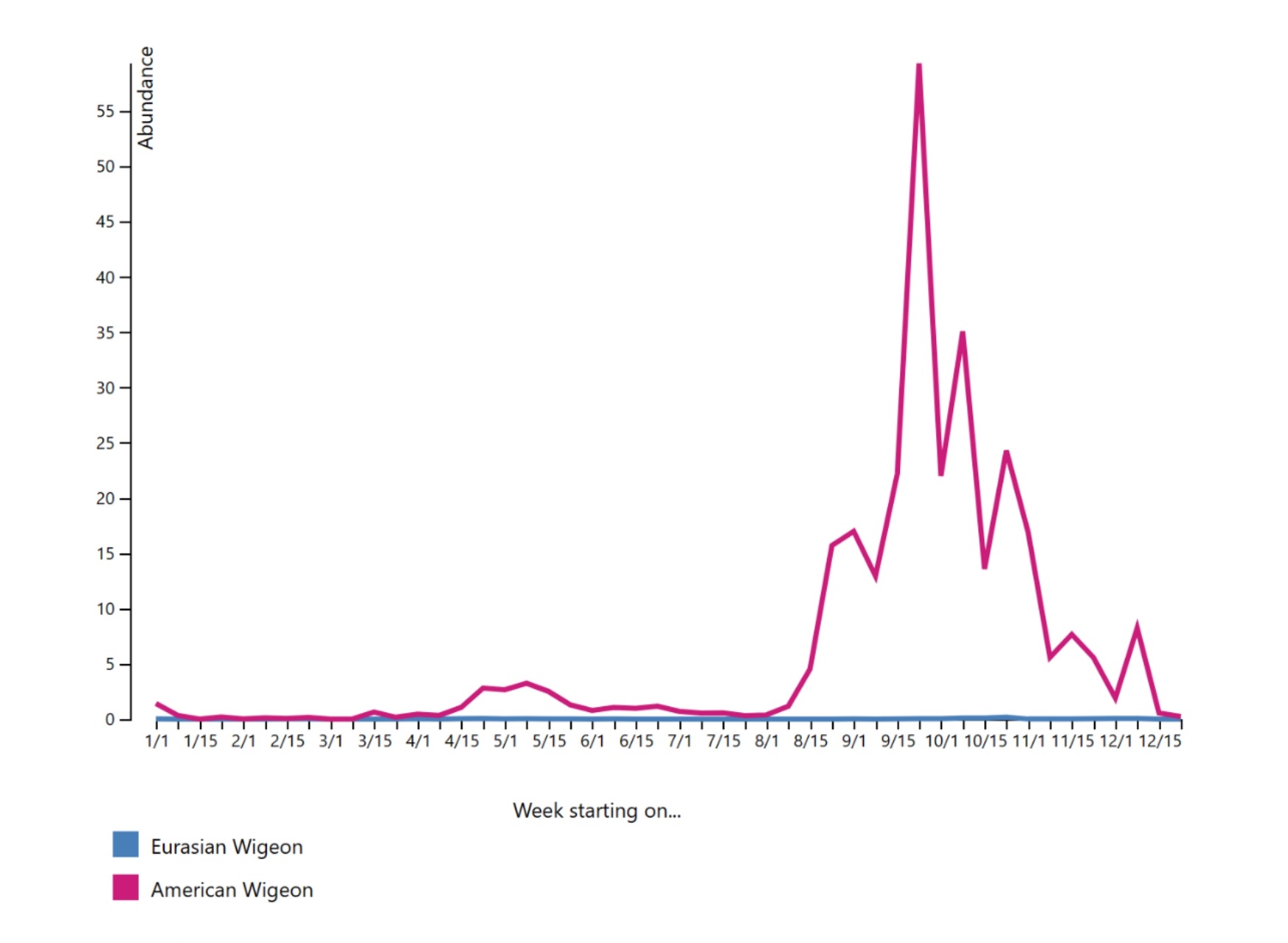American Wigeon
Mareca americana
Interested in reading the “Bird Ethnography of the Chugach Region” book?
American Wigeon
Mareca americana
No Translation Available
TRADITIONAL USE Eating the Birds
Description
The American Wigeon is one of many ducks found in the Chugach Region but can be easily distinguished by its unique shape. Wigeons have a very round head, short neck, and small bill. The male (drake) American Wigeon has a wide, flashy green stripe around the eyes and a pale white or cream cap from the top of the bill to the back of the head. A common name used for the male wigeon is “baldplate,” referring to its seemingly bald head. The rest of the drake’s body is like the hen’s body. The hen has a warm brown, sometimes red or grayish, plumage with a black tail. Both sexes have a very pale, almost blue, bill with a black tip and gray legs.
Like American Wigeons, the Eurasian Wigeon (M. penelope) has the uniquely rounded head that allows it to stand out from other ducks. The head of the male Eurasian is a deep brick red instead of the green present on male American Wigeon. The males still have a flashy green coloring to them, but it is visible on the back of the wings when they’re flying. The hens also look very similar to the female American Wigeon, but their coloring is a more orangey-brown plumage rather than a lighter brown.
Although breeding American Wigeon can be seen throughout the summer in the Chugach Region, they are much more visible during the fall migration. Eurasian Wigeons are occasional visitors to the Chugach Region as the nearest breeders are in Siberia and Kamchatka.
American Wigeon
Illustration by Kim McNett
Illustration by Kim McNett
Habitat and Status
The American Widgeon is a resident of the Chugach Region, occurring seasonally as an abundant migrant, a common breeder, and a rare winter visitor. They mostly breed on open wetlands in the boreal forest and subarctic river deltas of Alaska, including the Chugach Region. Wigeons may grab pieces of vegetation brought to the surface by diving water birds, so are sometimes called “poacher” or “robber” ducks. Being mostly vegetarian, most wigeons migrate in the fall well before northern marshes begin to freeze.
Audubon’s climate modeling suggests a highly variable future for American Wigeons. Most of its breeding range will shift dramatically northward, with only 35% of that range remaining stable. Their wintering range is forecasted to slightly expand and shift northward, one of many migratory waterfowl species that will likely winter further north as the persistent ice line retreats northward. An accomplished grazer, this species may “actually benefit from ponds fringed by lawns at suburban office campuses.” In contrast, the Eurasian Wigeon is currently a rare but regular winter visitor along the Pacific Coast. Audubon’s climate modeling suggests that over half of their wintering range will shift northward by 2080.
Distribution of American Wigeon. Eurasian Wigeon do not breed in North America but are occasional visitors to the Pacific Coast including the Chugach Region.
Continue Your Search Below
